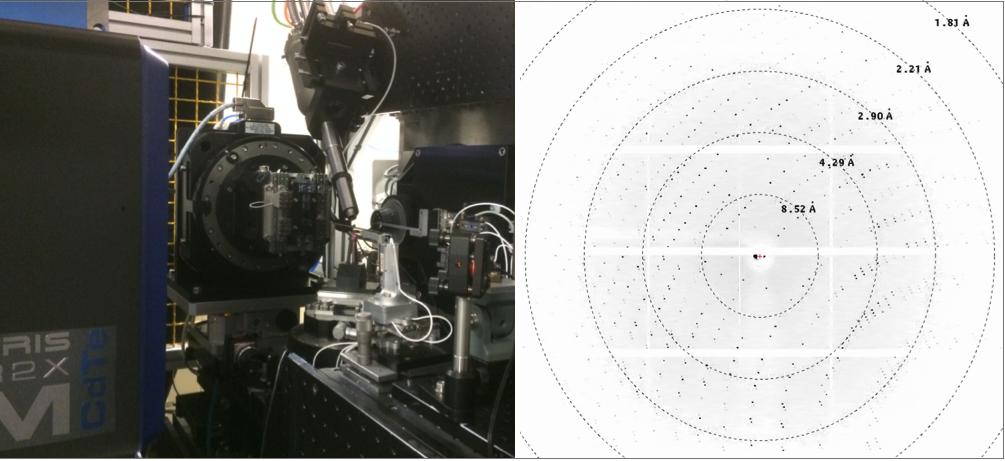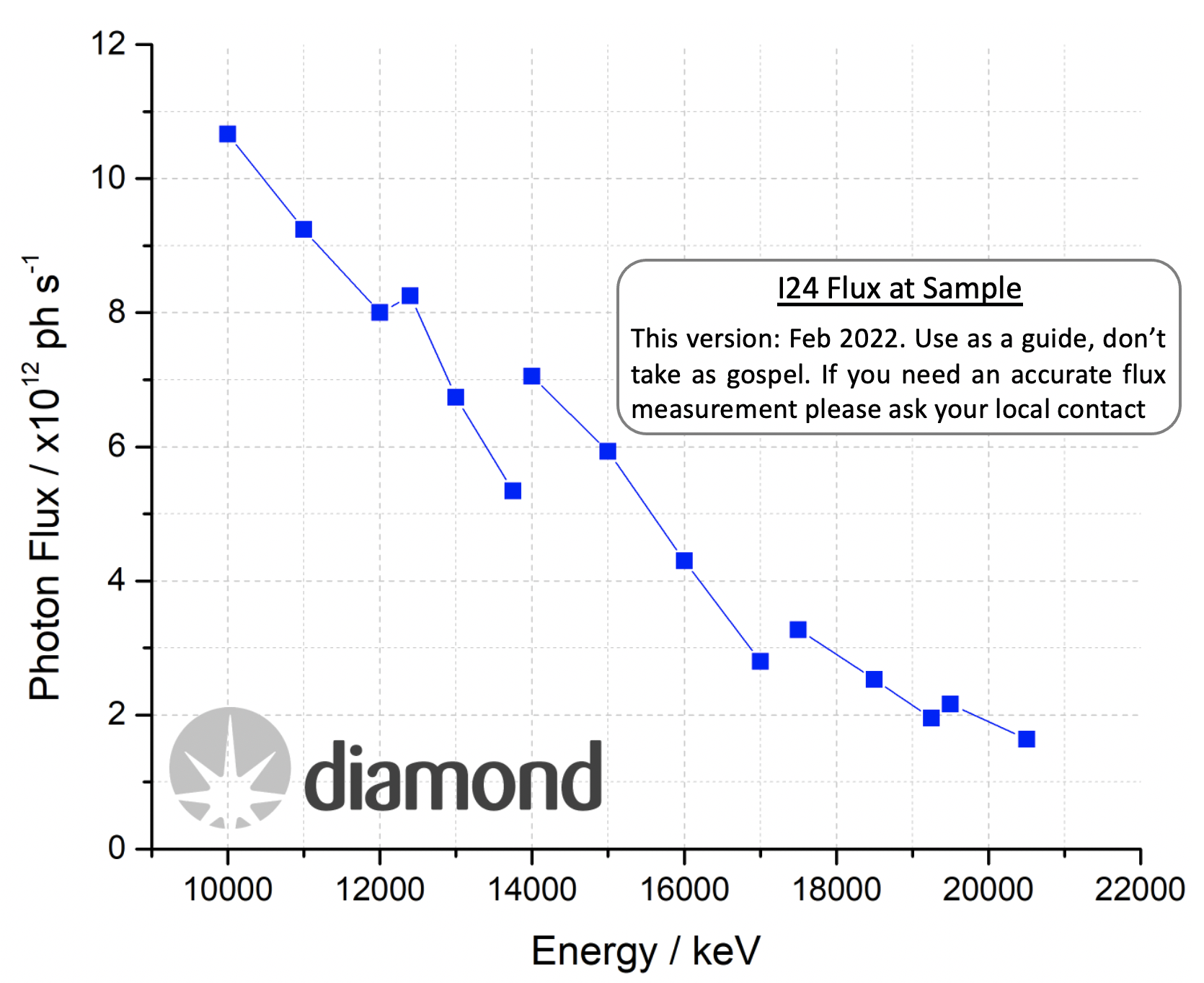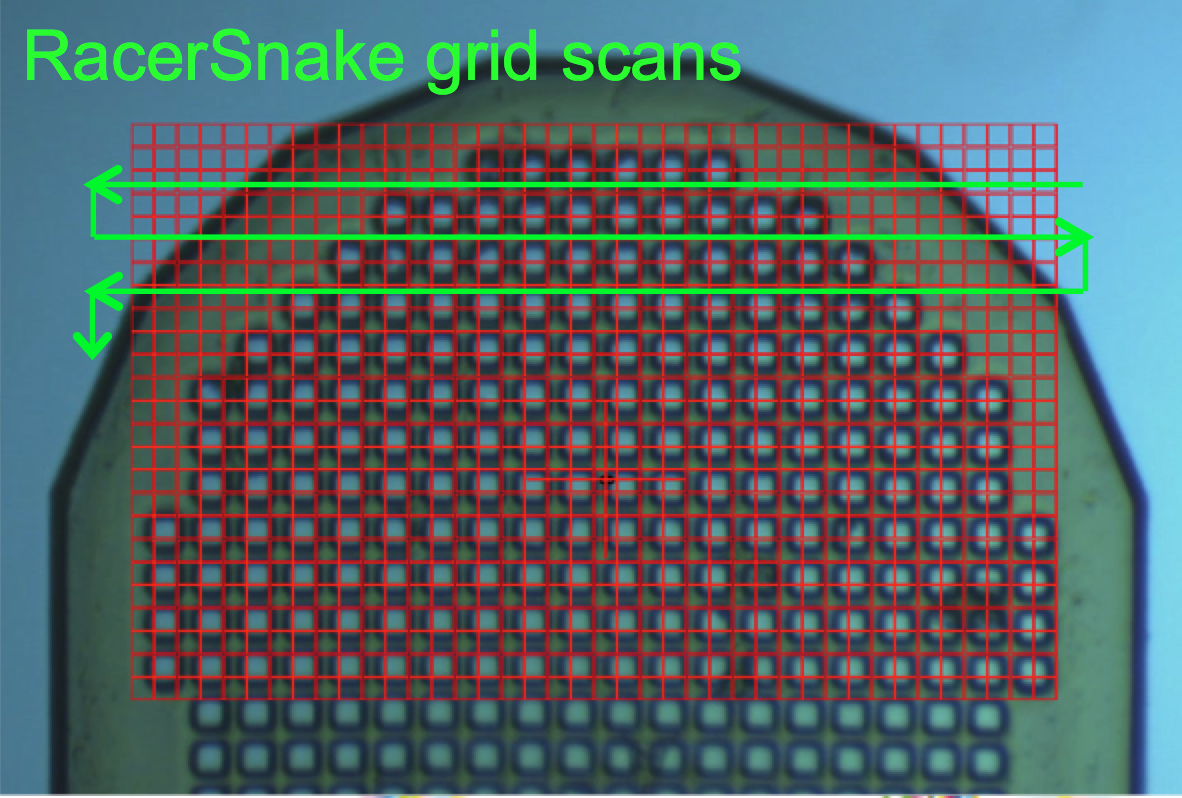News and Current Status
New Eiger Detector

The CdTe Eiger2 9M has arrived at I24 and the first high energy datasets have been successfully collected. A new world of high energy microfocus MX awaits..
For more info on see the eiger page here
Energy Range and beamline flux
A new insertion device was installed in shutdown 2 2020. The current accessible energy range is 7.8 -24 keV.
The low energy range will be extended as commissoning continues. If lower energies are a priority for you please let us know in advance of your beamtime. Note that at high energies the silicon sensor of the pilatus becomes inefficient.
The beamline flux is shown in the image below. If you need a number ask your local contact. If you need an accurate flux please ask your local contact in advance of your beamtime.

Even faster grid scans
Faster grid scans are now available. Data collection is at approx the max frame rate of the detector.
Serial data collection
Over the last couple of years we have been developing serial data collection (SSX) based on fixed targets. We are now at a point where we can offer fixed target (and other modes of) SSX to interested users during the final stages of commissioning.
For a very brief overview see the I24 serial webpage. If you have any questions please get in touch.
Multiplex data merging
Multiplex is a powerful tool to optimally merge wedges of data together. It can be run automatically or manually.
For a brief overview of how to run in manually see the multiplex news page.
For a brief overview of how it runs automatically see the manual
Fast grid scans
Grid scans have now been sped up by almost an order of magnitude using an approach developed from the one we use for fixed target serial crystallography Sherrell et al. J. Synch Rad (2015), Owen et al. Acta Cryst D (2017).
The grid shown to the right now takes ~40s compared to ~300s previously thanks to an optimised path being taken and a new mode of motion control. We expect further speed ups in the near future as we further develop the approach.
You can now queue hits from grid scans for data collection. For further information on this brief instructions see the grid scan page.
Fast grids are available on both goniometers.
Beamline status - breakdown by area
| Component | Status | Notes |
|
Vertical Goniometer (RT and cryo) |
Operational |
Kappa available for simple reorientation of samples. The kappa is not always mounted by default. It is available for use - just email your local contact in advance of your beamtime. Please email a week in advance: this will allow us to mount and test on the preceeding machine day. |
|
Horizontal goniometer (in situ ) |
Operational |
In situ available. The change between 'normal' and in situ modes takes less than 2 minutes and is fully automated. Currently trays must be mounted manually. |
| Grid scans | Operational | Fast grids with queued data collections based on hits now available. Further information here. |
| Line (helical) scans | Operational | Working as expected |
| Tuneability | Operational | Full energy range accessible |
| Beamsizes available | Operational | Change beamsize via pull down menu as per normal |
| Fluorescence detector | Operational | |
| Sample changer | Operational | BART sample changer. Dewar capacity 37 pucks. |
| Remote data collection | Operational |
Please consider coming to the beamline for data collection, especially for day shifts and/or if you have a challenging project. There is a lot of new equipment and we are more than happy to spend time explaining how it works and how you can best exploit it for your experiment. |
| Serial data collection | Operational | Fixed target and LCP extruder experiments available. An overview can be found here. Users are strongly encouraged to contact beamline staff to discuss potential experiments. |


 Industrial Liaison Office
Industrial Liaison Office

